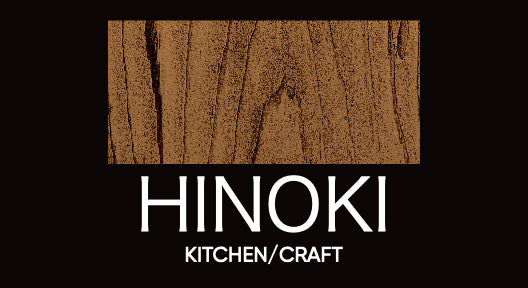Product Care
Thank you very much for your purchase. It’s wonderful to share the experience of so many great kitchen tools and accessories. To get the most out of your products, we suggest some tips for general maintenance and use.
Wood Products
Wood products are an excellent choice for kitchen tools and accessories, however, there are some basic guidelines to follow. This is to ensure you get the most out of your products. Wood, particularly Hinoki, is highly water absorbent. This is good for hygienic purposes because the wood is fast drying. Highly absorbent wood is quite resistant to mold and rot. But wood should always be completely dried before storing away. Leaving wood products, wet or dry in direct sunlight should always be avoided. This can cause the wood to warp.
The majority of wood products need to be immersed in water prior to use. This is mostly to prevent unwanted odors and tastes being imparted into the wood, which can be highly absorbent. A quick rinse under the faucet will do in most cases. And the excess water can be wiped off with your hand or with a towel. Tawashi, a palm fiber scrubbing brush used for kitchen cleaning, is recommended for cleaning wood products.
Steamers or Seiros
- Before using for the first time, it's recommended to steam the empty basket for 10-minutes to prepare for use.
- Before each use, always briefly immerse the steamer base and lid in water. This prevents the wood from burning, warping or cracking.
- Wood is not dishwasher safe, and this includes all steamers. Excessive detergent or soap may damage the natural oils of the wood. The best way to clean a steaming basket is with a Tawashi Brush.
- Avoid putting away wet. Hand drying with a towel generally works well.
- Avoid storing in damp, humid or excessively hot areas. Also, avoid keeping in direct sunlight.
- These products are handmade, so there may be slight variations in appearance and size, which may include scratches that occur in the manufacturing process.
Cutting boards or Manaita
Cutting boards or Manaita should be immersed in water prior to use. Never soak cutting boards in water as this may cause warping. Depending on your cutting style, the board may develop gouges or marks from the knife. This is normal, but keep in mind deep gouges may be hard to thoroughly clean. If this happens, I recommend a high-grit sandpaper to remove damage. Push cutting generally works very well. When cleaning Hinoki cutting boards, hot water and a mild detergent works well. But keep in mind that too much soap or detergent may damage the surface and/or natural oils of the wood. Hand drying with a towel and air drying in the open are recommended.
Rice chests or Ohitsu
Rice chests or Ohitsu should be thoroughly immersed in water. This may need to be done repeatedly to ensure the prepared rice does not stick to the rice chest. When used properly, the results of the Ohitsu are great. Placing prepared rice in the Ohitsu gives it a glossy shine and regulates the moisture very well. Hand wash with a mild detergent and allow to completely dry before storing away.
Leather Knife Strops
Strops are generally very easy to maintain as they will rarely be exposed to water. The leather, if used properly, will last for years. Our strops allow for the user to comfortably strop with both hands. Whether using one or two hands, always strop with an “edge-trailing” stroke. This means never pushing the primary edge of the knife into or towards the leather, which will cut and damage it. Think of the strop motion as starting on the spine or top of the knife and moving down, towards the primary edge. This is the direction you always want to be moving towards.
